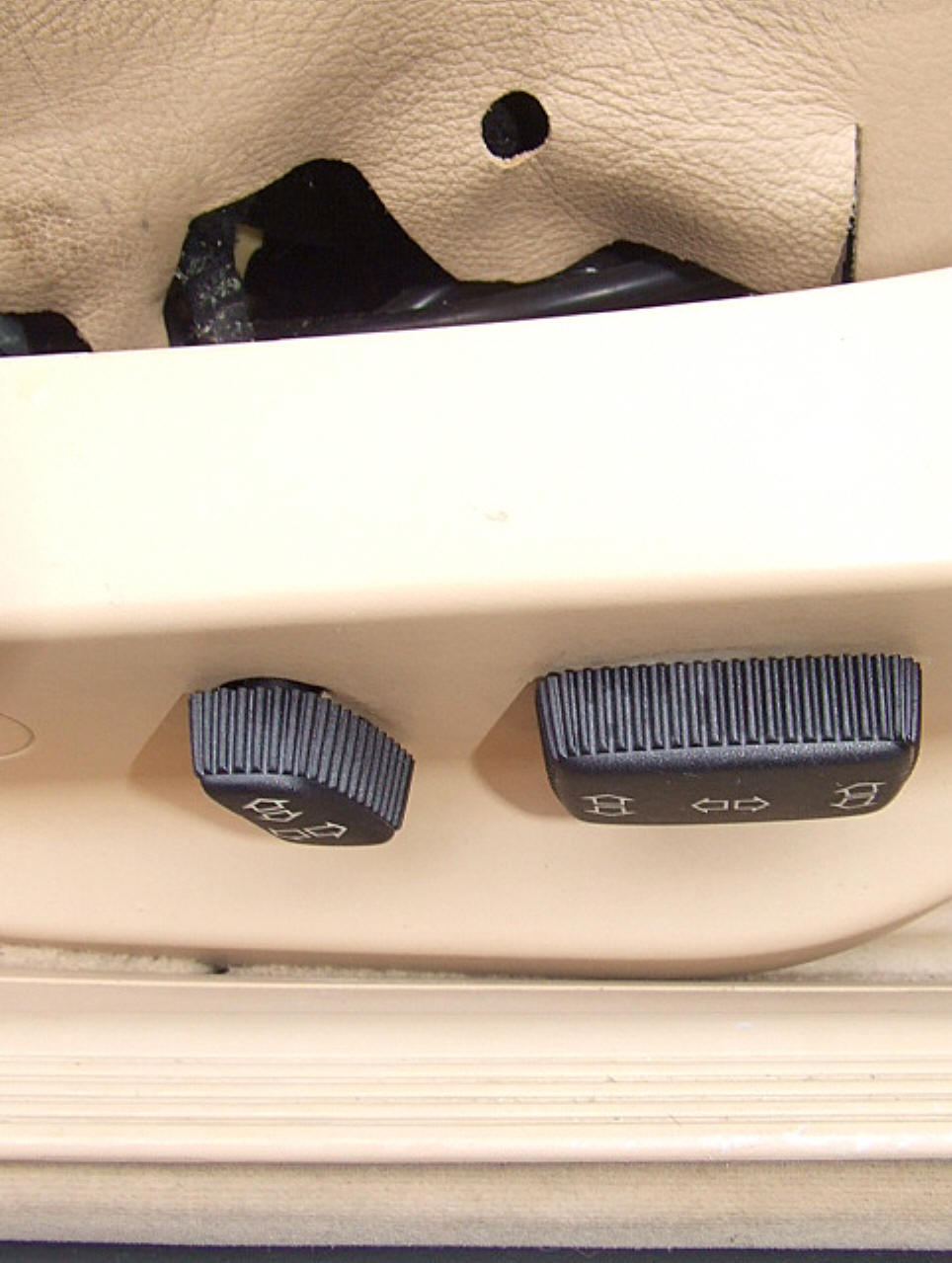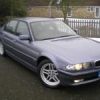BMW E38
THE 10 MOST COMMON PROBLEMS
The E38 is an excellent car, but even the flagship of the BMW range has a few weak spots. From my own experience, that of The 7 Series Register and the percentage hits on this website a definitive list can be made. Most of the problems exist in all models in the range, some only for the V8 models.
The following list is in order of highest to lowest chance of problems
1. The Dreaded Shimmy
Both the E32 and the E38 7-Series can suffer from the dreaded 'shimmy'. This is wheel-wobble that usually first shows itself under braking, for instance, when coming off a motorway intersection and braking from high speed. The wobble can be felt through the steering-wheel but it usually disappears as the car speed reduces.
Sometimes this is all you ever get, but more usually you will start to get wobble as the car is accelerated through 50 - 60MPH. The more you drive the car the worse it will get. The wobble is quite often accompanied by tram lining and a general feeling of imprecision from the steering in general.
The shimmies are often an indication of general wear in the steering system and suspension, the BMW E38 has a great deal of weight over the front wheels, especially when braking. It also seems to have a resonant frequency that occurs between 50 and 60 MPH, if there is any weakness it is at this speed where the problems will occur.
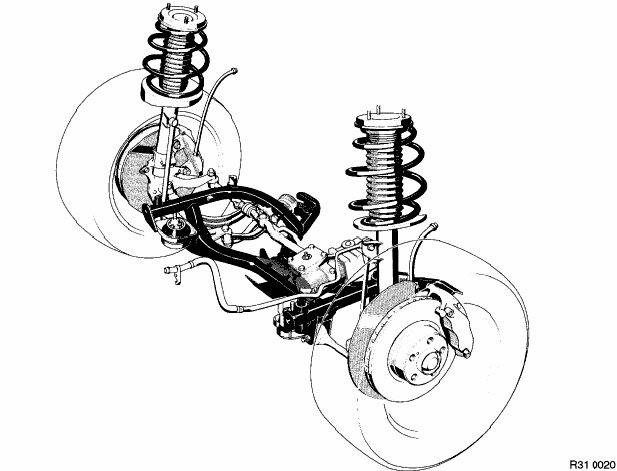
The shimmies can be repaired, often very simply.
Click here for repair information2. Cooling system
This is another problem that the E38 shares with the E32. There are four areas of the cooling system that are particularly weak:
Radiator. The E38 radiators have a plastic body just like the E32, and they break in just the same place which is around the Top Hose connection. Pre Sept 1998 models have the Top Hose fitted to the radiator with the aid of a Jubilee-clip. The usual problem is that the plastic pipe that the hose is connected to cracks under the Jubilee-clip and this causes a small weep around the hose that is difficult to trace. The usual evidence is white marks down the side of the radiator. The Post Sept 1998 models use a different fixing method for the Top Hose that stops this problem but unfortunately the plastic just breaks elsewhere, quite often on the LHS below where the Top Hose is fitted. Again, the only evidence is white marks. Both faults require the replacement of the radiator.
Expansion Bottle. The expansion bottles fitted to the pre-facelift cars have a tendency to split without warning. This dumps a huge amount of coolant in a very short time and is quite disconcerting for the driver as it produces huge plumes of steam! Fortunately, the amount of steam produced informs the driver of impending doom and no damage is done as long as the engine is switched off as soon as the steam is seen.
Viscous Fan. The Viscous Fan is mounted on the water pump shaft and is driven by the main belt from the crankshaft pulley. The assembly consists of a temperature-dependant viscous-clutch driven from the pump shaft that drives a large plastic fan. When the clutch is cold the fan idles and can be stopped with a rolled-up newspaper (the usual test), once the clutch is hot the fan is driven with a much greater torque and produces a great deal of air-flow. The usual problem is that the clutch fails and the fan cannot produce enough air-flow. The fault will show itself when the car is stationary when it will rapidly overheat. The temperature-rise is usually halted by the the auxiliary fan (A/C fan) which will operate independently to the A/C system when required. Once the car is moving the temperature starts to drop. A more unusual problem is that the clutch seizes, this is first noticed by large whooshing noises when the car is revved-up. Replace the viscous coupling immediately if this happens as the fan will disintegrate and this can cause all sorts of damage including big holes in the bonnet! Replacement of the Viscous Fan is pretty simple and is covered
here.Burst Hose. The hose that runs from the cooling-system accumulator to the heater system on the V8 models (item 8) often bursts for no apparent reason:
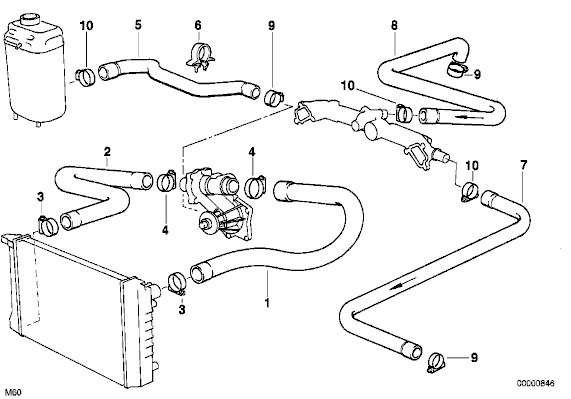
It is worth noting that the replacement hoses have a much thicker cross-section.
3. Air Conditioning. The A/C system tends to slowly leak gas, fortunately re-gassing gets things going again successfully.
Re-gassing is covered here.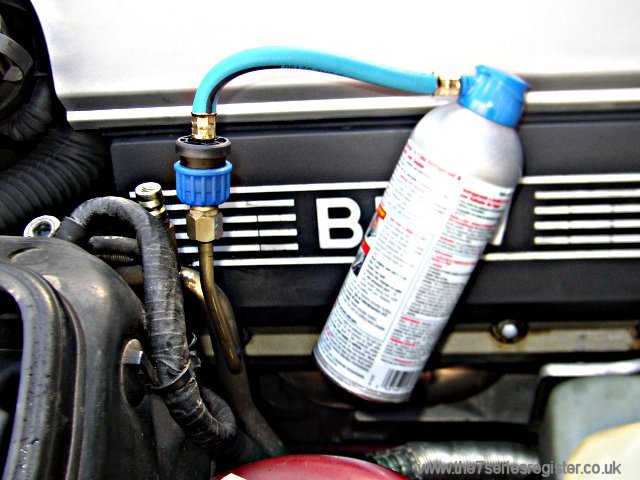
4. PCV Valve Failure. The V8 E38's suffer from PCV valve failure when they reach a certain age. The PCV valve consists of a diaphragm fitted to a housing that is fitted to the rear of the inlet manifold and when this is damaged it can cause erratic idling and excess smoke. Often mistaken for Nikasil problems in the early models, the repair is pretty straight-forward but does require a bit of patience especially when trying to get the Torx bolts out of the bellows assembly. The repair is covered
here (E32 shown but E38 similar).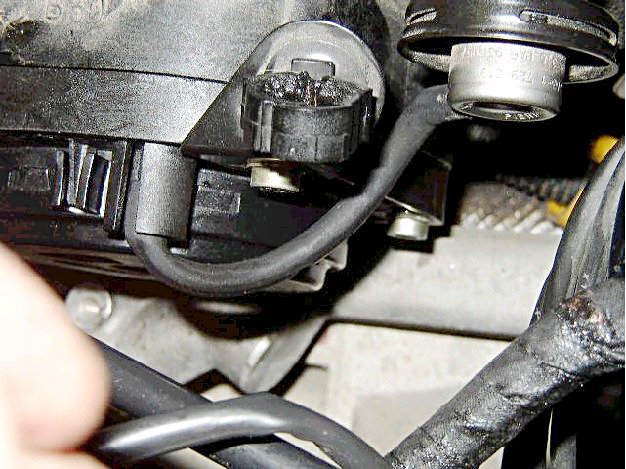
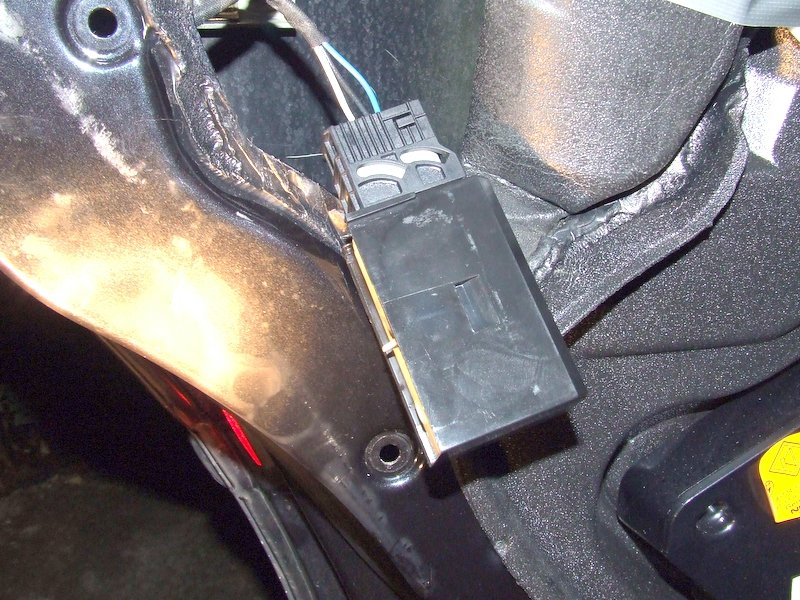
6. Rocker-Cover Leaks. A small oil leak isn't too much of a problem unless the oil fills up the spark-plug holes! Unfortunately this is exactly what happens on the V8 models and on the M52 (728i). Both engines use coil-over-plug ignition coils with short HT-stubs, and it is these stubs that are damaged by the oil. Once the HT-stubs are damaged the engine will start to misfire. The repair is covered
here (E32 shown but E38 similar).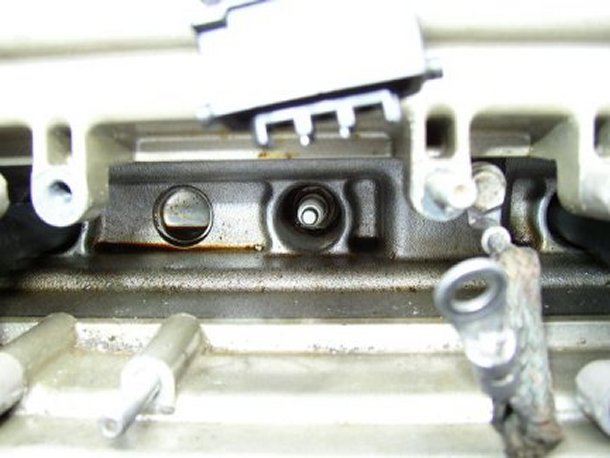
7. ABS/DSC Faults. The E38's produced after 1997 can suffer from ABS failure that bungs up fault lights for ABS, ASC and Brake Warning, the lights are all orange (warning) rather than red (failure). This is due to the failure of the Bosche control unit that is strapped to the ABS pump. The fault usually shows itself when the car has got hot, all is OK one second, the next all three lights glow orange and your ABS and ASC will stop working. The fault only goes away when the car has cooled down. The repair is covered
here.8. Park Distance Control Failure. Although trivial, the failure of the PDC is pretty annoying. See
here for the repair.9. MKII Sat-Nav / OBC Lockup. An annoying feature on the MKII Sat-Nav systems is the ability to lock-out the complete OBC and radio. This seems to be due to the amount of information being exchanged on the I-Bus. Sometimes the system will re-start, the screen goes blank, the menu is seen and all is OK again. Other times the only fix is to disconnect the battery for 30 seconds. I had this problem on my 735i and first 740i, both of which had the MKII Sat-Nav. The MKIII's do not show this problem. One way around this problem is to switch OFF the RDS system on the radio, this reduces the I-Bus traffic.
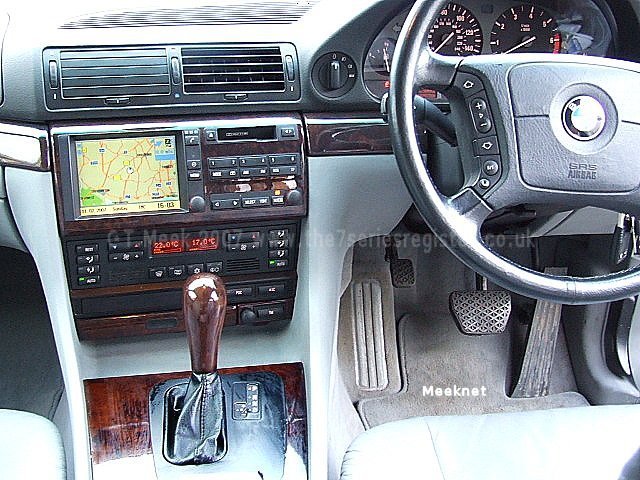
10. Loose Seat-Base. Another trivial fault but still annoying, especially when the seat-adjustment switches get stuck and you find yourself getting further from the pedals as you are driving! The repair is found
here.